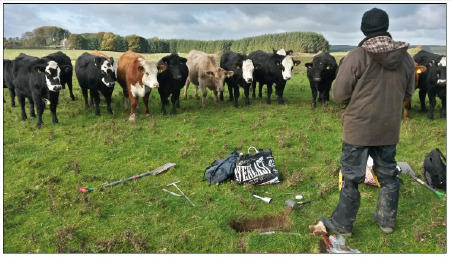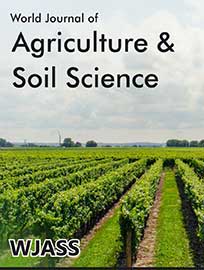 Short Communication
Short Communication
Determining the Climate Change Mitigation Potential of Countryside Stewardship
Warner DJ, Tzilivakis J, Green A, Charlton D and Lewis KA*
Agriculture & Environment Research Unit, UK
Lewis KA, Agriculture & Environment Research Unit, UK.
Received Date:December 20, 2018; Published Date: January 09, 2019
Short Communication
Countryside Stewardship (CS) has been England’s principal Agri-environment scheme providing financial incentives for farmers and land managers to look after the environment by undertaking a range of management options such as creating, restoring and improving habitats, reducing water pollution and keeping the character of the countryside. Aside from the benefits for biodiversity and ecosystem services many of the available management options under CS offer opportunities for mitigating the effects of climate change either by reducing greenhouse gas emissions or by increasing carbon sequestration. However, it can be a challenge to quantify the benefits (and burdens in some instances) due to the breadth of the scheme itself and the complexity of the factors involved such as the physical, chemical and biological processes, and spatial and temporal variability due to geographical and climatic factors. An assessment of the benefits and burdens of the 2005-2014 schemes’ climate change mitigation effects has been undertaken previously [1-4]. However, in 2015 as part of the Rural Development Programmed for England the Countryside Stewardship scheme was revised to introduce new options and modify the management of some of the existing options. Therefore, the original evaluations for climate change mitigation required reassessment in response to this revision. Further research was needed to update the original greenhouse gas calculations and to ground-truth the soil carbon sequestration figures in the field to determine if there was any deviation from the results forecast by the previous studies. It would also allow for further refinement of the models to be used going into the future. This work was undertaken over a large area on the Wallington Estate in Northumberland, England taking 500 samples for bulk density measurements and 500 further samples for soil carbon analysis. As the photo shows this exercise was supervised by a large number of young bullocks. Results will be available from mid-2019.

Acknowledgement
None.
Conflict of Interest
No Conflict of Interest.
References
- Warner D, Tzilivakis J, Lewis K (2008) Research into the current and potential climate change mitigation impacts of environmental stewardship (BD2302). Department for Environment, Food and Rural Affairs (Defra), pp. 48.
- Warner D, Tzilivakis J, Lewis K (2011a) A revisit to previous research into the current and potential climate change mitigation effects of environmental stewardship (BD5007). Department for Environment, Food and Rural Affairs (Defra), pp. 71.
- Warner D, Worrall F, Bell M, Lewis K (2011b) A Land Carbon Management Plan for the Wallington Estate. National Trust, pp. 194.
- Warner DJ, Tzilivakis J, Green A, Slater RIJ, Lewis KA (2013) Measuring the Extent to Which Greenhouse Gas Emission Savings Achieved by Environmental Stewardship are Displaced On-farm Natural England Report NECR121. Natural England, York, UK.
-
Warner DJ, Tzilivakis J, Green A, Charlton D, Lewis KA. Determining the Climate Change Mitigation Potential of Countryside Stewardship. World J Agri & Soil Sci. 1(2): 2018. WJASS.MS.ID.000509.
-
Climate, Mitigation, Potential, Countryside, Stewardship, Agri-environment, young bullocks, Physical, Chemical, Biological process, Carbon sequestration
-

This work is licensed under a Creative Commons Attribution-NonCommercial 4.0 International License.






